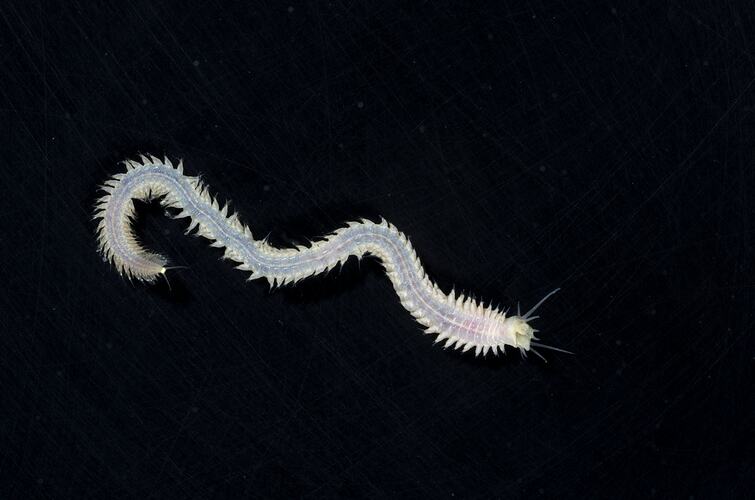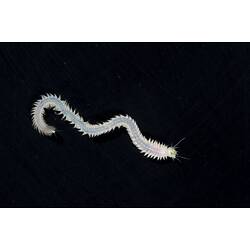General Description
Short-bladed chaetae (chitinous bristles); distinctive ball-and-socket articulation in the dorsal bunch of chaetae on most segments starting at about 12-15 (these are referred to as "homogomph falcigers" in technical descriptions). Paragnaths (hard denticles) are present, usually on both rings of the eversible phayrnx. This species can be distinguished by the absence of paragnaths on the oral ring. Body up to about 4 cm long.
Biology
Nereis bifida and Nereis maxillodentata are the two species of Nereis most commonly collected in southern Australia.
Distribution
South-eastern Australia, or south-western Australia.
Habitat
Collected from a wide variety of habitats, intertidal to 200 m, occasionally deeper than 200 m.
More Information
-
Animal Type
-
Animal SubType
-
Brief Id
Short slender worm, distinguished by microscopic features.
-
Maximum Size
4 cm
-
Habitats
-
Endemicity
-
Commercial
No
-
Conservation Statuses
DSE Advisory List: Not listed, EPBC Act 1999: Not listed, IUCN Red List: Not listed
-
Depths
Shore (0-1 m), Shallow (1-30 m), Deep ( > 30 m)
-
Water Column Locations
On or near seafloor
-
Taxon Name
-
Scientific Author
Hutchings & Turvey, 1982
-
Common Name
Rag Worm
-
Phylum
-
Class
-
Subclass
-
Order
-
Family
-
Genus
-
Species Name
bifida



